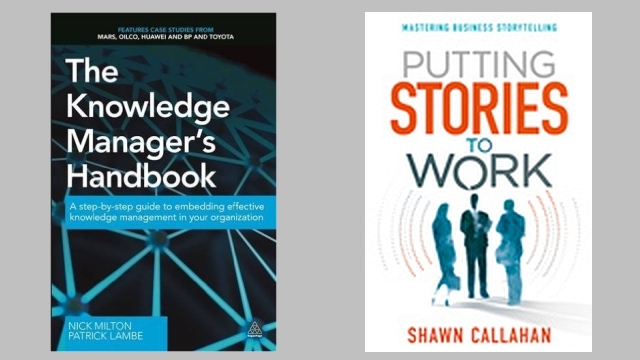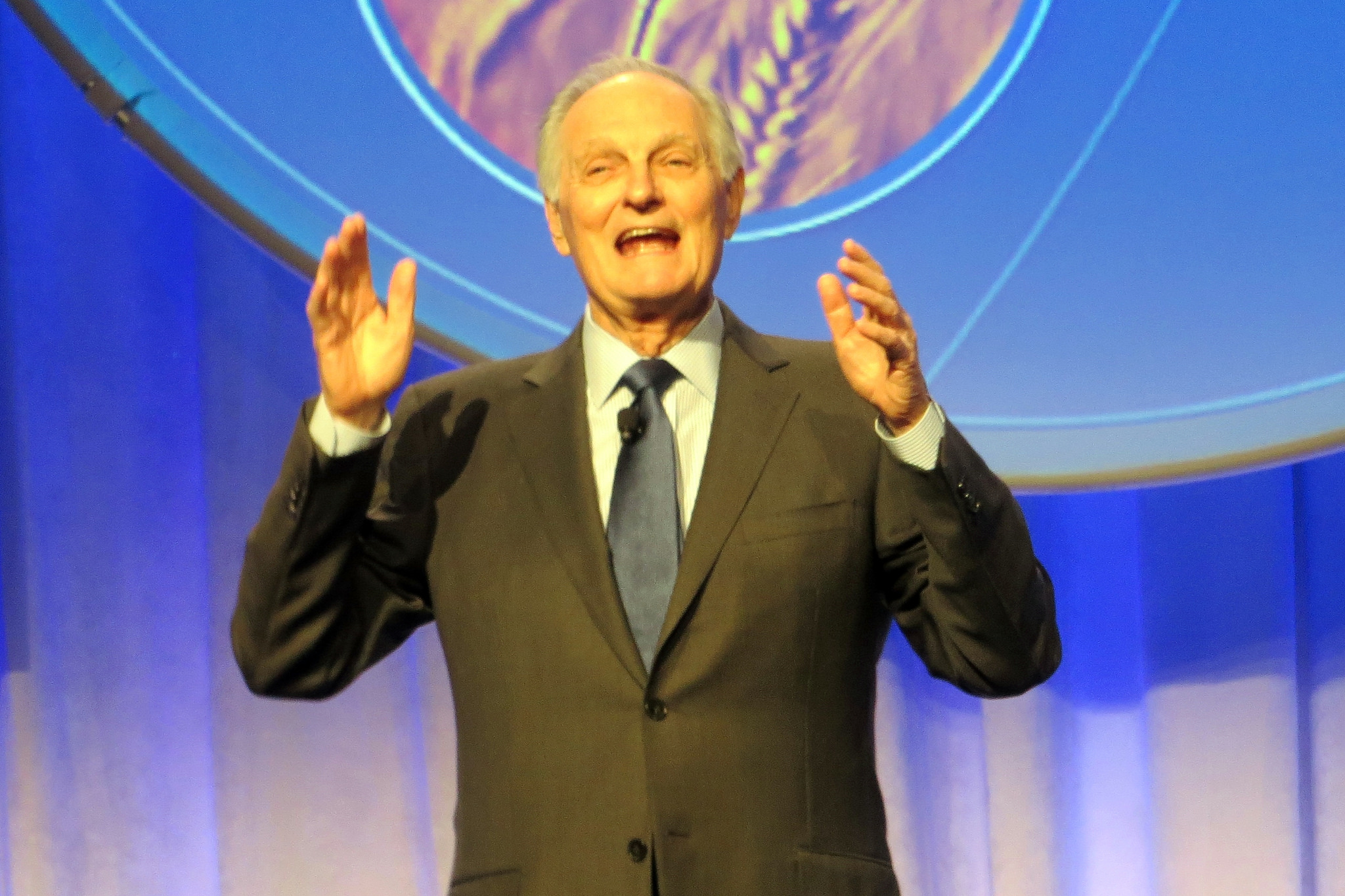
Empathy or division? On the science and politics of storytelling
Claire Corbett, University of Technology Sydney
Writers can’t always be trusted when they talk about the power and importance of story. We have a vested interest and can get sentimental, promoting the immense power of story, of narrative, as inherently benign.
Even when a writer is famously sceptical of narrative, such as Joan Didion, the sentimentalists overrule her. As Zadie Smith pointed out recently in The New Yorker, one of Didion’s most famous lines – “we tell ourselves stories in order to live” – is now quoted as if Didion is celebrating story rather than warning about delusion.
“It is a peculiarity of Joan Didion’s work that her most ironic formulations are now read as sincere,” Smith says of this line. “A sentence meant as an indictment has transformed into personal credo.”
It is illuminating, then, to consider fascinating developments in thinking and research on the effects of story from other disciplines, such as philosophy, history and, most recently and surprisingly, perhaps even counter-intuitively, neuroscience.
In discussing story and its effects, I don’t mean only fiction or even prose. Poetry and song are likely our first forms of storytelling. These forms have traditionally included science and history, which are also transmitted as storytelling. First Nations’ science and history, for example, are encoded in stories and songs and visual art.
What we might cautiously call Western culture didn’t used to be so finicky about genre. Science poetry used to be a big deal.
Erasmus Darwin, for example, now most famous as Charles Darwin’s grandfather, was a physician and member of the Royal Society, who also wrote science poetry. He wrote an entire volume of erotic verses praising Carl Linnaeus’ taxonomic botanical system called The Loves of the Plants (1791). With footnotes. His science poetry was strikingly illustrated by William Blake and Henry Fuseli. And he made a lot of money from it; the volume was reprinted many times. Of one species of fern he wrote:
E’en round the pole the flames of Love aspire,
And icy bosoms feel the secret fire!
In 1608, the great astronomer Johannes Kepler wrote Somnium or “The Dream”, a novel in which an Icelandic boy and his witch mother learn of an island named Levania (our Moon) from a demon. Somnium presents a detailed imaginative description of how the Earth might look when viewed from the Moon. It is considered the first serious scientific treatise on lunar astronomy.
Kepler understood very well the importance not just of narrative, but of controlling the narrative, which he did very well, as he spent years saving his mother from a charge of witchcraft.
Oh no, someone’s cat is missing!
Now, in classic writer fashion, I will introduce another aspect of this topic with a personal anecdote, complete with physical details.
As I was thinking about writing this essay, I was drinking a coffee at the Café de la Fontaine in King’s Cross. Just outside the window stood a streetlight. On the pole was taped a missing cat notice that had not been there the day before.
I hate missing pet notices. I feel so worried for both pet and owner. But there was something else there, I realised at that moment, in the convergence of my thinking about story and then seeing the missing cat poster. It has to do with the power of narrative and the ways in which stories work on our brains.
A few days earlier, something happened that I had never experienced before: NSW Police had sent a text message to my phone about a missing child, a teenage boy, in the Blue Mountains. For the first time, they used the available technology to send a text message to all the phones in the area. Of course, no one was prepared for this. The text suddenly appears on your phone, no warning. I am glad they can do that and I hope it helped, but it is a shock to get a missing person notice out of the blue on your phone. It feels very personal, very close to you.
Now I am going to jump to one of the points about story and how it works from the literature of psychology and neuroscience.
Some readers are probably wondering: hey, but what happened to the missing child? Did they find him? This tension – and retention of information – is related to something called the Zeigarnik effect.
Bluma Zeigarnik was a Lithuanian psychologist, who in 1927 published a paper titled “On Finished and Unfinished Tasks”. She found that study participants were able to recall details of tasks about 90% better when they were interrupted during the task than when they were able to complete them. These findings have, to some extent, been replicated in subsequent studies.
The study had been inspired by Zeigarnik’s professor observing that waiters in a café seemed much better at remembering details of incomplete tabs or orders than completed ones. That is, it seems the brain opens a file on a task and that file stays open until the task is finished. Once the task is complete, the file disappears.
The link to the effectiveness of serial dramas and the way cliffhangers operate in narrative is clear and has been drawn a number of times. A story also opens a file in your brain and it remains open, this networked pattern, like an unfinished tapestry, until the story is resolved.
Stories are the best technology we have for remembering vast amounts of information and detail, so long as all these elements are related in some consequential and important and emotional way – think of bards being able to recite epic tales that go on for days, or Scheherezade’s 1001 nights, or Indigenous songlines, filled with story, that include important information about history and creatures and the motions of stars and details of place.
So some readers may now have a file open in their brains. It sits there, waiting, until we know what happened to the missing boy. He was found, though I don’t know any other details of his story: why he went missing, what went wrong – all of the details that, say, a novel might fill in.
In that café, I realised that one of the main reasons missing pet stories are so distressing is that, unlike most missing-person stories, we almost never get to know the outcome. We never know whether that cat or dog or parrot was found. And there’s another problem: even if the pet is rescued, what happened to it can never be narrativised. We can never really know what happened or how it felt for that creature.
This always makes me think of a line from a brilliant Lorrie Moore short story I often teach in Creative Writing classes titled “People Like That are the Only People Here”, about a writer whose baby has cancer. It is a very funny story. No, really. Something that tortures the mother is that her baby cannot narrate his suffering – she will never know that story. Moore writes:
Who can say what babies do with their agony and shock? Not they themselves … They put it all no place anyone can see. They are like a different race, a different species …
It is one of the great human mysteries. And we don’t know where animals put their suffering either. This seems almost a greater injustice than the suffering itself, and in a way it is. If the suffering is no place anyone can see, then there is little incentive to alleviate it.
Dreaming the world
From the never-to-be-known stories of missing pets to the fate of humanity: I want to draw here on the work of historian Yuval Noah Harari, who set out to tell the story of the human species in his book Sapiens (2011).
In Sapiens, Harari notes that our closest relatives are the several species of chimpanzees; we share 99% of our DNA with them. Harari asks: why, when we are so similar, do Sapiens rule the planet, not chimpanzees? Why are the chimps stuck in labs and cages where we study them and do what we like with them?
Harari’s answer is that Sapiens rule the world because we are the only animal that can co-operate flexibly in large numbers. We can cooperate not just at street level or village level or city level; we can create mass co-operation networks, in which thousands and even millions of complete strangers work together towards common goals.
One-on-one, even ten-on-ten, we humans are very similar to chimpanzees and physically much less powerful. Any attempt to understand our unique role in the world by studying our brains, our bodies, or even our family relations, is doomed to failure. The real difference between us and chimpanzees is the mysterious glue that enables millions of humans to cooperate effectively.
This mysterious glue, Harari concludes, is made of stories, not genes. We cooperate effectively with strangers because we believe in invisible concepts such as gods, nations, money and human rights. None of these things exist outside the stories that people invent and tell one another.
There is no such thing in the universe as a nation or money or human rights – except in the common imagination of human beings. You can never convince a chimpanzee to give you a banana, Harari notes, by promising him that after he dies he will get limitless bananas in chimpanzee Heaven. Only Sapiens believe such things.
At the heart of our mass cooperation networks, you find stories that exist only in the collective imagination. Catholics who don’t know each other can launch an Inquisition or pool funds to build a hospital because they share very specific sets of beliefs, images, and stories about the nature of God. Two Serbs who have never met might risk their lives for one another because they both believe in the existence of the Serbian nation. Two lawyers who have never met can nevertheless combine their efforts to defend a complete stranger because they believe in the existence of laws, justice and human rights.
This is what Margaret Atwood meant when she said you can’t stop people believing in invisible things: it could be God, but it could also be the stock market.
Look around you. Almost everything you see once existed only in someone’s mind: the phone in your pocket; the laptop on your desk; the car, bus or train you travel on; the food you eat; the building you live in. Your town, city, nation. The world we live in, day to day, has mostly been created by other people. Of course, the natural world imposes limits on us and will do so ever more stringently and urgently. As my father once said to me, nature always bats last.
But even our understanding of what the natural world is has been invented. It is all created knowledge: the Big Bang, Newton’s laws of motion, orbital mechanics, evolution, dark energy and dark matter, human psychology, ecology, and so on. All of these things may well be real, but our ways of understanding them, formulating them, talking about them are all invented, all created.
It makes a difference whether you believe that mental illness is an imbalance in the brain caused by trauma or genetics, or that it is caused by demonic possession. The stories we tell ourselves matter. In a sense, they are almost the only things that matter, because from them all else flows: how we raise our children, how we do politics, whether we invade that country or fly to the Moon.
The result is that, in contrast to other animals, we Sapiens live in a dual reality. On the one hand, there is the objective reality of oceans, trees and lions; on the other, there is our created and shared reality of gods, nations and companies.
As history has unfolded, the created reality has become ever more powerful, so that today the very survival of oceans, trees and lions depends on the grace of invented entities such as corporations law, the stock market, the European Union and Google.
This is a powerful argument for the importance of diversity in writers’ voices, diversity in the stories we pay attention to. It is important because we need as broad a range of stories to choose from as possible. We can only know our own worldview as part of a story if we can contrast it with other coherent beliefs and worldviews. Just as the ability to tell stories can doom us, it is also now the only thing that can save us.
The philosophers have their say
Now I want to bring in our philosophers. The first is an attractive figure: that master of 18th-century empiricism, our canny Scotsman, David Hume, one of the most important figures in the Western philosophical tradition. Hume was a man of wit and charm, popular in the salons of his day, and reasons for this may be evident in the generosity and inclusivity of his ideas around morality.
In An Inquiry Concerning the Principles of Morals (1751), Hume offers what he considers to be a scientific theory of morality. In this work, described by historian Professor Darren Staloff as “a transition point in the history of Anglo-American moral philosophy”, Hume argues that philosophy keeps trying to come up with abstract principles about what constitutes virtue and the good life.
Not surprisingly, philosophy has generally considered itself the pinnacle of the intellectual tradition. Not so, says Hume. Virtue, he says, is not the result of either self-sacrifice or self-interest.
Hume argues that moral progress consists in including more people – and different kinds of people – in our sense of community, thus extending our moral concern to encompass increasingly large domains. He specifically argues this with regard to women and Native Americans. Women and Indigenous peoples were shabbily and unjustly treated; therefore, progress consists of entering imaginatively into what life is like for people who are not you, who are in fact unlike you.
In other words, Hume reverses the Western philosophical tradition since Plato, who had attempted to wrest moral authority from the poets. Hume gives it back, arguing that literature is vital for moral progress.
Neo-pragmatism
It is refreshing, after reading about thousands of years of abstract writing that treats theology and philosophy as the pinnacles of human wisdom, to hear Hume saying no, all this theorising is useless; it is literature we need to pay attention to. And this tradition has been continued by neo-pragmatist philosophers, notably Richard Rorty, who also rejected Plato.
“Rorty argues that philosophers have traditionally sought to escape from history by searching for truth,” notes Staloff. “He believes truth can never be found embedded in language. A ‘true’ statement is merely one that we approve of.”
Even more crucially, Rorty argues that language is not merely descriptive, not a kind of analogous system indicating reality, but rather it is itself part of reality. It is causal, not representational.
Rorty reaches the same conclusion as Hume: cruelty is to be ameliorated through cultural edification. The moral education needed to sensitise us to the suffering of others, of those who have to put their suffering “no place anyone can see”, is most effectively absorbed through fiction.
The dangers of narrative
To be fair to Plato, in proposing to ban the poets from his republic, he was recognising the real danger that the power of narrative can be misused to tell lies, which he blamed for the execution of his beloved teacher Socrates. His reservations must be taken seriously, along with the scepticism of writers such as Didion. Like a very sharp knife, the power of story is neither good nor evil; it cuts both ways.
We see this dilemma enacted every day now. Is Joe Rogan “just” a storyteller and therefore free to spread conspiracy theories and lies about vaccines, resonant as they are, in theme and tone, with the medieval “blood libel” against the Jews? Or should he be expelled from the republic, denied his paid public platform to spread dangerous misinformation?
The Protocols of the Elders of Zion, antisemitic propaganda about supposed Jewish plans for world domination, was first published in Russia in 1903. It is considered an early example of a conspiracy theory. It was thoroughly debunked by The Times in 1921. But it is still spreading its poison around the world.
In that shapeshifting way of totalising lies (almost analogous to the way viruses mutate and adapt), it is now linked to conspiracy theories around the Covid 19 pandemic.
So on the one hand we have philosophers, such as Hume and Rorty, arguing for the critical role of literature, of story, in building empathy, expanding the realm of those whose suffering we are sensitised to. If one of the greatest injustices is that beings are forced to put their suffering “no place anyone can see”, then, according to Hume and Rorty (and many creative writers), the proper use and study of literature is one of the few ways we can illuminate such places.
On the other hand, there is the long tradition of Plato and many other philosophers who have argued for the importance of transcendent objective truth.
In our current emergencies over the acceptance of vaccines and the imperative for action on climate, we can see that the need to find a way to agree on what constitutes an objective truth is more urgent than ever.
Language as virtual reality
What underlying mechanisms or processes in human beings could underpin the critical role of story? What is the power of language that allows shared realities to be created by large numbers of people across space and time? It may be that neuroscience is starting to provide some fascinating clues.
It seems that language and storytelling operate as the original and very powerful forms of virtual reality. fMRI technology, which can show us mental processes in real time, is starting to illuminate the physical processes that drive this.
Our brains exist in silence and darkness, with sense data presented by electrical signals. The brain builds its picture of the world from these electrical signals. It is not surprising that the electrical signals triggered by reading are as real to the brain as any other kind of electrical signal.
A study by professor of psychology Jeff Zacks has shown that reading about an action triggers the same areas of the brain as actually performing that action.
“We’re used to thinking that virtual reality is something that involves fancy computers and helmets and gadgets,” notes Zacks.
But what these kind of data suggest is that language itself is a powerful form of virtual reality, that there’s an important sense in which when we tell each other stories that we can control the perceptional processes that are happening in each other’s brains.
These kinds of studies can now show us some of the variables that influence the effectiveness of the stories we tell and the influence they can have over the processes in each other’s brains.
As the science writer Annie Murphy Paul has noted, precise words can stimulate specific areas. Words such as “grasp” and “kick” light up not just the motor cortex, but the part of it responsible for those movements. Read a sentence such as “the baking cookies smelled sweet” and the language processing areas of your brain will work, but the part dealing with smells remains dark. When you read “the cookies smelled of cinnamon” that area lights up too.
Hearts beat as one
We now have a very recent finding on how deep this entrainment goes. The power of stories extends not just from controlling the brains of readers or listeners, but their hearts too.
Professor Andrew Huberman is a neuroscientist who directs a research lab at the Stanford University School of Medicine that investigates, among other things, the neurology of anxiety and stress, cognition and performance.
He hosts a popular podcast, in which he draws from recent scientific literature to empower listeners to take practical steps to improve sleep, say, or diet. In a recent episode, he reported a remarkable finding in terms that for him were unusually dramatic:
This is a paper that came out in the journal Cell Reports – very reputable scientific journal. The study involved having subjects listen to a story. The subjects are all listening to the same story but those subjects are not listening to it together. They are in separate rooms or even entirely separate locations on the planet, or they are brought into the laboratory on separate days – so these subjects are separated by time and space.
What this study found is that different subjects listening to the same story undergo the same variation in heart rate. In other words the gaps between their heartbeats start to resemble one another in response to the same story.
This is absolutely remarkable – just think about that for a minute – this is a coordination of the physiology of the body in response to a narrative, a story, in different people. And yet when they line up the heart rates of these different people listening to the story at different times and in different places, they find that those heart rates map onto one another almost identically.
Huberman explains why this is so remarkable and notes that more broadly this means coordination between neural circuits in the brain and body, coordination with the lungs and other organs.
“I think these results are just beautiful,” Huberman says.
In the sense that they really show that our brain and body are highly coordinated because people are listening to the story and the heart rate is changing in response to the story, but that there is what we call a stereotyped response to a given story. In my mind there was no reason the results had to be this way. You know, two people listen to the same story, why should their heart rates be almost identical? Very very interesting and points to the power of narrative and story in coordinating our physiology.
The causal quality of language
Rorty’s contention that language is causal, not just descriptive, seems to be borne out by current studies in neuroscience.
If Hume and Rorty are correct that story is the best technology we have for expanding empathy and solidarity (and the neuroscience seems increasingly to show that there are physiological mechanisms capable of driving such a process), then this clarifies why intolerant regimes and neoliberal governments so consistently attack, interfere with and defund the humanities and the arts.
Political systems that rely on division and intolerance try to dissolve or at least narrow solidarity, even as they attempt to intensify it within more tightly defined boundaries. Solidarity is the quality, according to Rorty, that holds postmodern bourgeois “liberal” society together.
But as we have seen, story itself can be used to drive division as much as to cement solidarity. Narratives can enlarge the scope of our concerns; they can illuminate the sufferings of others. But they can also reinforce fear and intolerance, and they do this through processes grounded in the deepest physiological fibres of our being.
Despite Didion’s warning, we will continue to tell stories, because they are one of the primary ways we have of understanding and then shaping the world. This makes storytelling inherently political, because politics is the practical expression of morality.
This also illuminates why politics (and indeed any politician) grounded in any grand master-narrative, such as religion or a doctrinaire version of a political theory, is so dangerous. Such master narratives, the very ones deconstructed by postmodernism, claim not to be stories at all, but transcendent truths, which therefore cannot be critiqued or changed.
The pluralism embraced by postmodernism and deconstruction actually brings us closer to the truth, because it allows us to understand things in comparative ways and is thus the very precondition of beginning to think meaningfully about them.
Writing on Rorty and postmodernism, Patricia Waugh notes:
What makes Rorty “strong” in his postmodernism, despite his defence of consensus as the basis of democracy, is the textualist insistence that society can only be transformed without violence through an aesthetic version of genetic engineering where it is vocabularies and not genes which determine the kind of life we shall lead.
This claim illuminates why the battle over issues such as pronouns is so important and why the right resists so fiercely the idea of calling trans people by their proper pronouns, all the while claiming such issues are trivial. But if we don’t agree to alter our reality with words then we are left with guns, and we can see how well that is working out just now.
Rebecca Solnit brings many of these questions and concerns together in her 2019 essay Whose Story Is This?
Who gets to be the subject of the story is an immensely political question, and feminism has given us a host of books that shift the focus from the original protagonist — from Jane Eyre to Mr. Rochester’s Caribbean first wife, from Dorothy to the Wicked Witch, and so forth. But in the news and political life, we’re still struggling over whose story it is, who matters, and who our compassion and interest should be directed at.
The common denominator of so many of the strange and troubling cultural narratives coming our way is a set of assumptions about who matters, whose story it is, who deserves the pity and the treats and the presumptions of innocence, the kid gloves and the red carpet, and ultimately the kingdom, the power, and the glory. You already know who. It’s white people in general and white men in particular, and especially white Protestant men, some of whom are apparently dismayed to find out that there is going to be, as your mom might have put it, sharing.
The sharing that Solnit alludes to here links to Rorty’s ideas about the importance of solidarity and consensus for democracy. Consensus can’t be imposed and solidarity should not be manufactured by indulging in fantasies of a homogenous, unified society (and narrative) that never really existed. The only way forward, as Solnit puts it, is “sharing”.
This brings us back to the unique power of story. It has one killer feature, an extra feature that not even real life has. As Annie Murphy Paul notes:
novels go beyond simulating reality to give readers an experience unavailable off the page: the opportunity to enter fully into other people’s thoughts and feelings.
This killer feature is one aspect of the power that Plato, Didion and many others wisely fear, and Hume and Rorty rightly celebrate. It is not a power we can or will stop using, so one of the great battles of our time, as Solnit says, is “who the story is about, who matters and who decides”.![]()
Claire Corbett, Lecturer, University of Technology Sydney
Article source: This article is republished from The Conversation under a Creative Commons license. Read the original article.
Header image source: iStock.






